This winter I picked up an early 1920s ‘Bestway’ Initial Transfer catalogue. All the transfers are long since gone, but I wanted it for the delicious illustrations anyway! And it’s a great piece of social history: the presentation of the models; the comparisons between ‘ideal’ drawings, and the reality of humans; the use of exoticism in setting the scene for the undergarments; and simple the changing vocabulary.
Here are the bits from the catalogue that focus on undergarments. I’ll post the initialed sportswear separately. Enjoy!
Like the lovely lady on the cover, lifting her slip to show her embroidered drawers (and a rather fabulous, if quite large, pair of shoes!)
Or the pages with all the different styles of initials, and instructions on working them up. Obviously I’m most taken with the second one down from the top right corner!
Though the dove holding an initial, and the nickname topped with a bow are very sweet indeed:
One thing that caught my attention immediately was how not-perfect many of their examples are. I feel so much better about my embroidery skills looking at them!

There are also illustrations of all the way the monograms may be applied.
I think this slip, very simple in cut, but for the vandyked hem, is just fabulous:
And this is a great look at a bob. Not so sure about that slip. The side gathers are a bit odd….
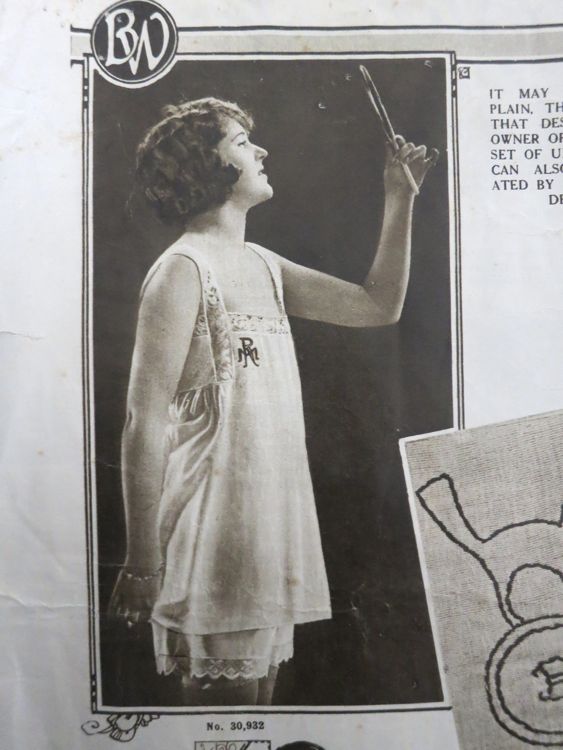
And here is a close up of that initial frame I love so much! Kitty even has a properly fluffy tail, and long, long whiskers!
These cami-knickers are just divine, though having a circular monogram, ‘specially pleasing’ or not, on both busts is rather pushing the point a bit!

It’s interesting that the terms used throughout the magazine are ‘underwear’, undies’, ‘knickers’ and ‘cami-knickers’. Chemise and petticoat are still used, but gone are the days of ‘drawers’.
I really like this extremely severe pair of top and knickers. And I LOVE her headpiece! And her mules! And her cushion, which inadvertently looks like a really awesome Colossal Squid.
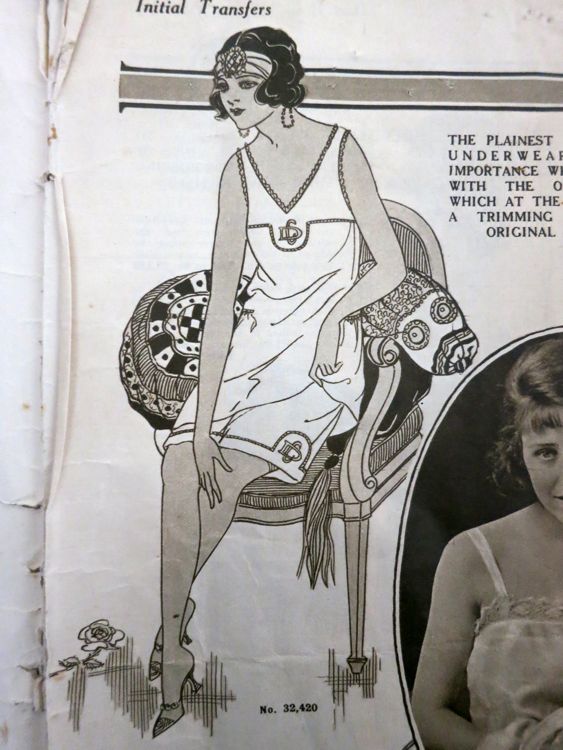
The oriental influence of Poiret and the Ballet Russes is really clear in the illustrations. And, of course, anything ‘exotic’ makes even the simplest undergarments titillating.

Interesting to compare the difference between the illustrated bobs and bodies, and the reality on a model:


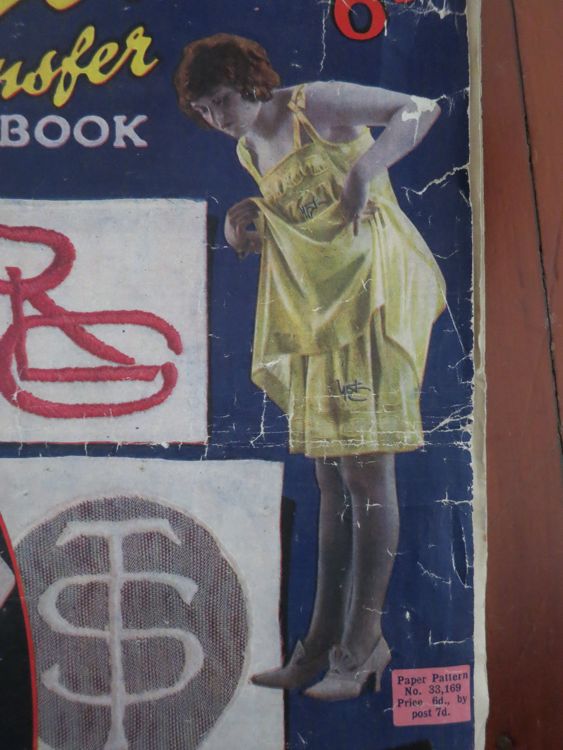
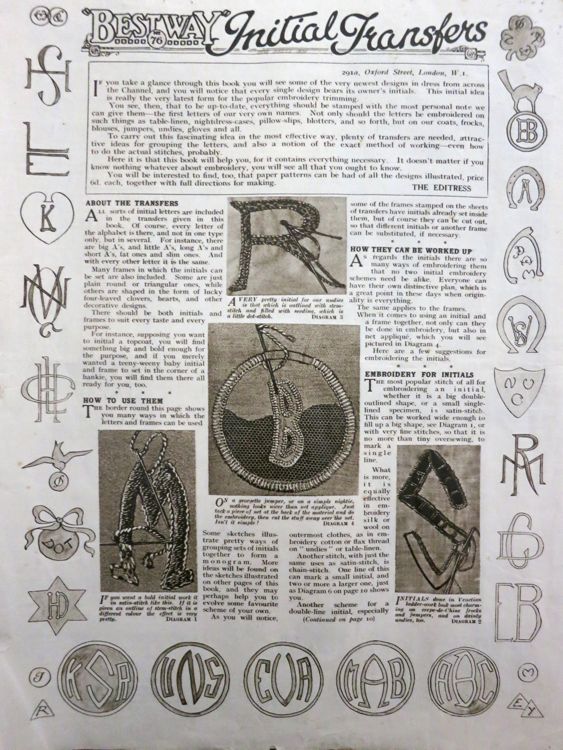

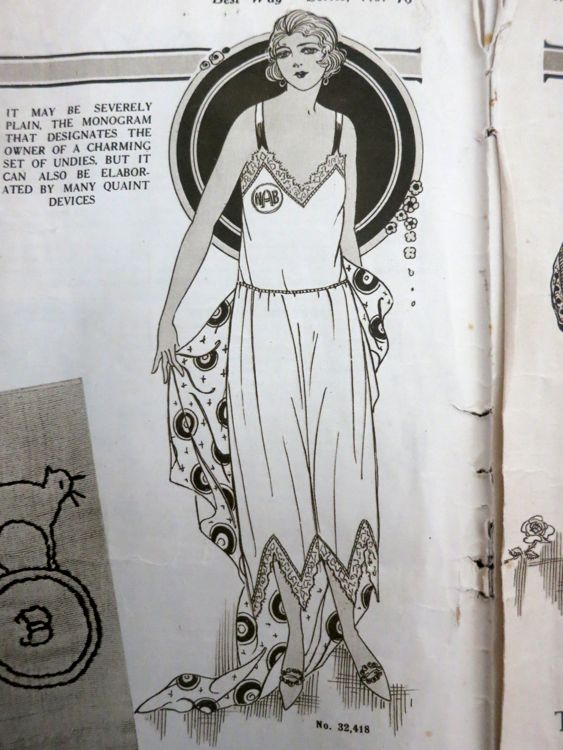
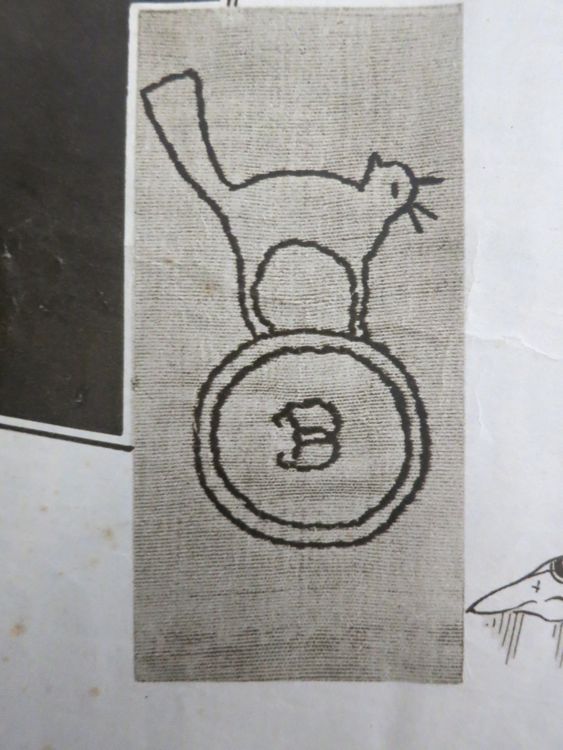
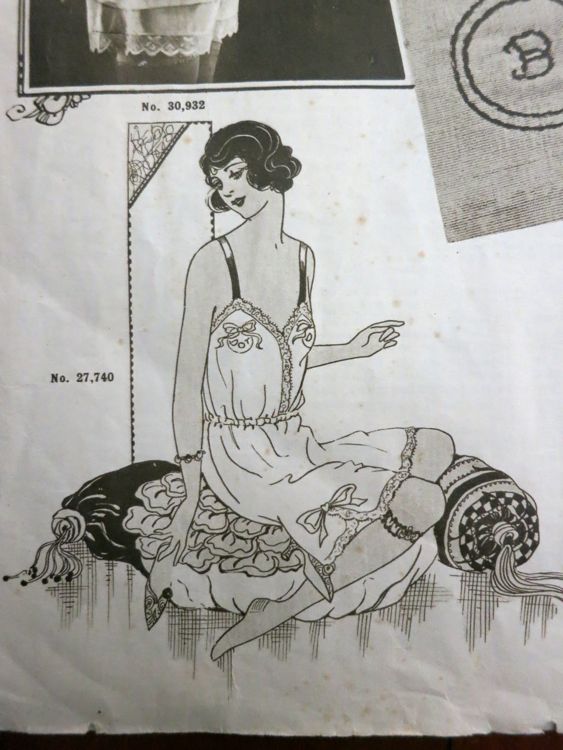
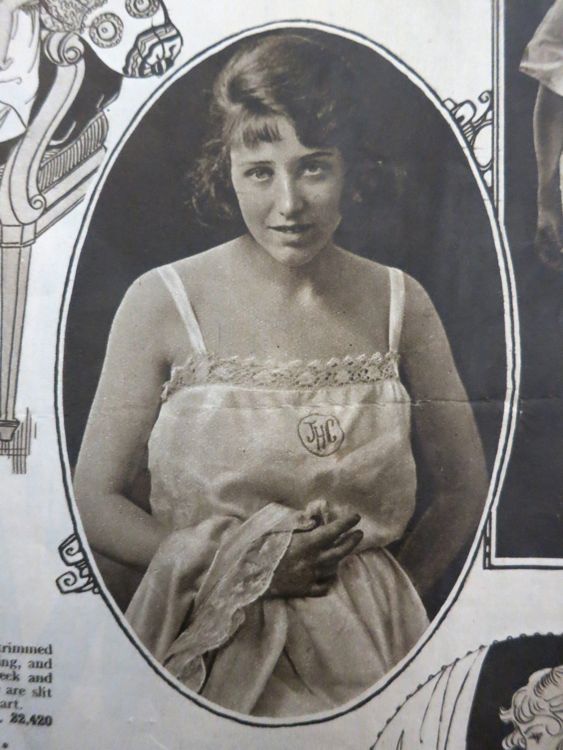

I love the cat monogram and the squid pillow illustration! These are fantastic! Now, if only I didn’t have a terrible embroidery skills.
These are so fun! So many vintage aspects packed in one place.
The last photo looks like an earlier style to my eye, and she looks quaint and pretty in that cap, even if a bit swallowed up by her nightie.
It seems I can’t think of “cami-knickers”, “step-ins”, or “teddies” without remembering Cheaper by the Dozen, and the chapters dealing with the oldest daughter paving the way for the younger ones (who she hoped would have an easier time when their turn came) in regard to trying to update what they considered to be old-fashioned ways of dressing. By degrees, she changed her dress and appearance in general to align more closely with the current 1920’s styles, against strong resistance from their father.
Good score! What a fascinating book.
I’ve seen side gathers like that on ’20s slips before, but always much lower down on the hips. I’m not sure why you would put them up there underneath the bust line.
I’ve seen the lower gathers before too, but these high ones… They are almost like an attempt to get rid of both the bust and waist by making the latter as big as the former!
They are, aren’t they? Rather an odd approach to figure-shaping.
LOL. That last image is great. Just great. 🙂
Best,
Quinn
Ah, yes – who doesn’t need some “quaint devices” elaborating their underwear? 🙂
I think they’re elaborating the monogram, strictly speaking. 🙂
I vote HD for sheriff!
What a fun and informative post! Thank you! I’ve just finished my 1920s underthings for the Historical Sew Fortnightly Challenge #19 but next will be the corset and slip. A slip which now has to have a monogram!
Great to see this post. Having just drafted up a set of early 1920s ‘Tango Knickers’ with an eye to re-creating them for the Blue challenge, it’s been interesting to see just how much fabric these women were wearing underneath their clothes, especially evident when working in cotton, even a light batiste or voile seems to produce voluminous gathers.
I was thinking about the high side gathers – maybe they were intended as an option for ladies whose hips and tummies were wider than their bust; the gathers would allow for less restriction over those areas than a straight up and down line.